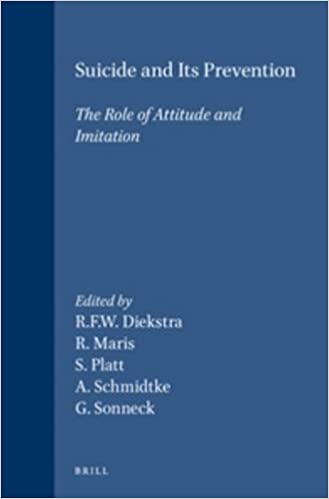Suicide and Its Prevention: The Role of Attitude and Imitation

The idea that suicide is a global health problem isn’t new. Many organizations had noticed the ongoing and escalating problem of suicide, and in 1989, the World Health Organization published Suicide and Its Prevention: The Role of Attitude and Imitation. The collection of chapters from different authors was intended to represent the state of the art in suicide prevention at the time. Some of the work recorded here continues to be explored today.
Only the Internal Matters
The book explains that one of the limitations of considering suicide a mental illness (a concept itself that has fallen out of favor for good reason) is that it restricts focus on the external factors that are leading people to be suicidal. I strongly disagree with the assertions of the author of the chapter, Menno Boldt, because what most of the research says is that it’s not our circumstances that matter, it’s what we make of our circumstances that matter. Whether it’s Kahneman’s work in Thinking, Fast and Slow about the relativeness of our perception of our situation or Rich Tedeschi’s work in Transformed by Trauma, Lisa Barrett Feldman’s work in How Emotions are Made, or Richard Lazarus’ work in Emotion and Adaptation, we know that what we make of the circumstances is more important than the circumstances themselves. In the introduction to Man’s Search for Meaning, Viktor Frankl quotes Nietzsche with, “He who has a Why to live can bear almost any How.” A why is necessarily about the internal beliefs of someone, not in their external circumstances. (See Start with Why for more.)
Unendurable
It should be clear by the preceding that the idea of unendurable pain isn’t some fixed point but rather changes with other factors of a person – most notably, their sense of purpose and hope. We’re implored to save people from unendurable circumstances, but there’s no way to know what those are. The methods by which one saves others from the unendurable may be equally traumatizing. It may be possible that someone’s loss of freedom with commitment to an inpatient facility is worse than whatever conditions they’re being saved from.
Aristos
It’s a Greek word that means the best possible solution given the circumstances, and it’s the way that I’d describe excellence. Some people assume that excellence approaches perfect – but it’s not that. It’s the ability to make the best possible outcome with what you have.
Unfortunately, at the point where the book was written, the meta-analysis showed that there was little improvement in the treatment of suicide in the preceding 25 years. That’s not exactly doing the best possible in the circumstances.
More than Mental Health Professionals
However, one of the small wins that had been made by 1989 is that it was clear that the need for suicide prevention training needed to extend beyond just mental health professionals. If we were going to identify people at risk for suicide, it would require that we engage everyone in the process.
Resignation
One of the observations is that physicians in private practice were more likely than those in employed positions to die by suicide. The story of Ralph and his resignation to his position from Work Redesign seems particularly appropriate. Ralph didn’t want more freedom and power even when it was offered because it would have invalidated his prior decision to give up. Perhaps it’s that the pressures on an employed physician are different than those in private practice, but it may be equally likely that those who have taken employed positions have resigned themselves to the state of affairs. Of course, it’s also possible that they’re disproportionately different, and these differences caused them to self-select into either private practice or corporate employment.
Marching Forward
While there’s little to share from a 30 year old book on suicide prevention, it’s important to recognize that we’ve been working for a long time on Suicide and Its Prevention.
